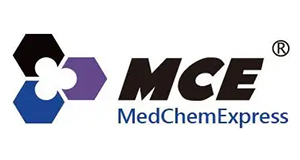Tamoxifen-d3 (hydrochloride)
Tamoxifen-d3 (hydrochloride)
SKU
MEXHY-13757S-0
Packaging Unit
Get quote
Manufacturer
MedChemExpress
Availability:
loading...
Price is loading...
Product Description: Tamoxifen-d3 hydrochloride is deuterated labeled Tamoxifen (Citrate) (HY-13757). Tamoxifen Citrate (ICI 46474) is an orally active, selective estrogen receptor modulator (SERM) which blocks estrogen action in breast cells and can activate estrogen activity in other cells, such as bone, liver, and uterine cells[1][2][3].Tamoxifen Citrate is a potent Hsp90 activator and enhances the Hsp90 molecular chaperone ATPase activity. Tamoxifen Citrate also potent inhibits infectious EBOV Zaire and Marburg (MARV) with IC50 of 0.1 μM and 1.8 μM, respectively[5]. Tamoxifen Citrate activates autophagy and induces apoptosis[4].Tamoxifen Citrate also can induce gene knockout of CreER(T2) transgenic mouse[6].
Applications: Cancer-programmed cell death
Formula: C26H27D3ClNO
References: [1]Russak EM, et al. Impact of Deuterium Substitution on the Pharmacokinetics of Pharmaceuticals. Ann Pharmacother. 2019 Feb;53(2):211-216./[2]Hawariah A, et al. In vitro response of human breast cancer cell lines to the growth-inhibitory effects of styrylpyrone derivative (SPD) and assessment of its antiestrogenicity. Anticancer Res. 1998 Nov-Dec;18(6A):4383-6./[3]Laura Cooper, et al. Screening and Reverse-Engineering of Estrogen Receptor Ligands as Potent Pan-Filovirus Inhibitors. J Med Chem. 2020 Sep 4./[4]Zhao R, et al. Tamoxifen enhances the Hsp90 molecular chaperone ATPase activity. PLoS One. 2010 Apr 1;5(4):e9934./[5]Jia Y, et al. Cardiomyocyte-Specific Ablation of Med1 Subunit of the Mediator Complex Causes Lethal DilatedCardiomyopathy in Mice. PLoS One. 2016 Aug 22;11(8):e0160755./[6]Osborne CK. Tamoxifen in the treatment of breast cancer. N Engl J Med. 1998 Nov 26;339(22):1609-18./[7]Feil S, et, al. Inducible Cre mice. Methods Mol Biol. 2009;530:343-63.
Molecular Weight: 410.99
Research Area: Cancer
Solubility: 10 mM in DMSO
Target: Apoptosis;Autophagy;Estrogen Receptor/ERR;HSP;Isotope-Labeled Compounds
Applications: Cancer-programmed cell death
Formula: C26H27D3ClNO
References: [1]Russak EM, et al. Impact of Deuterium Substitution on the Pharmacokinetics of Pharmaceuticals. Ann Pharmacother. 2019 Feb;53(2):211-216./[2]Hawariah A, et al. In vitro response of human breast cancer cell lines to the growth-inhibitory effects of styrylpyrone derivative (SPD) and assessment of its antiestrogenicity. Anticancer Res. 1998 Nov-Dec;18(6A):4383-6./[3]Laura Cooper, et al. Screening and Reverse-Engineering of Estrogen Receptor Ligands as Potent Pan-Filovirus Inhibitors. J Med Chem. 2020 Sep 4./[4]Zhao R, et al. Tamoxifen enhances the Hsp90 molecular chaperone ATPase activity. PLoS One. 2010 Apr 1;5(4):e9934./[5]Jia Y, et al. Cardiomyocyte-Specific Ablation of Med1 Subunit of the Mediator Complex Causes Lethal DilatedCardiomyopathy in Mice. PLoS One. 2016 Aug 22;11(8):e0160755./[6]Osborne CK. Tamoxifen in the treatment of breast cancer. N Engl J Med. 1998 Nov 26;339(22):1609-18./[7]Feil S, et, al. Inducible Cre mice. Methods Mol Biol. 2009;530:343-63.
Molecular Weight: 410.99
Research Area: Cancer
Solubility: 10 mM in DMSO
Target: Apoptosis;Autophagy;Estrogen Receptor/ERR;HSP;Isotope-Labeled Compounds
| SKU | MEXHY-13757S-0 |
|---|---|
| Manufacturer | MedChemExpress |
| Manufacturer SKU | HY-13757S-0 |
| Package Unit | Get quote |
| Quantity Unit | STK |
| Product information (PDF) | Download |
| MSDS (PDF) |
|

 Deutsch
Deutsch






